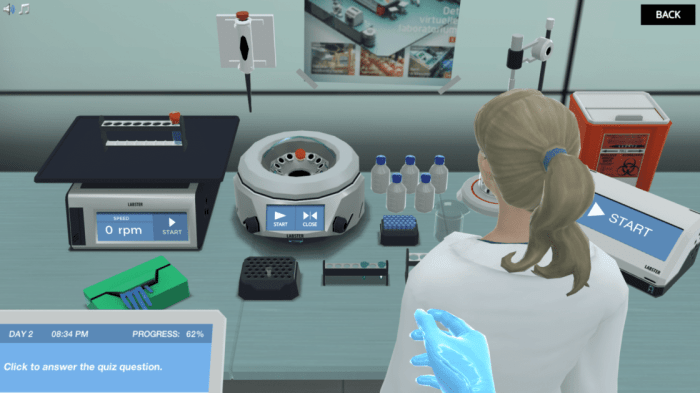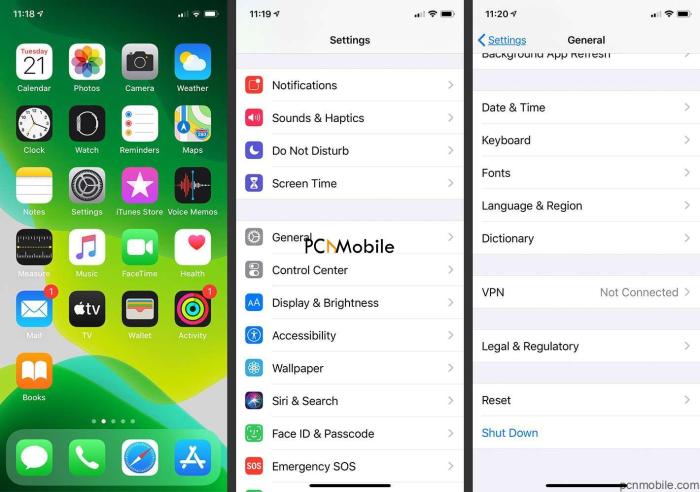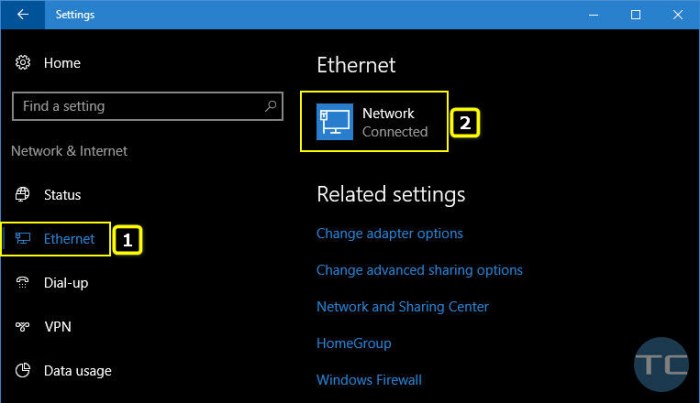Delving into the realm of network connectivity, Hardware Lab Simulation 7-1: Investigating Network Connection Settings embarks on a journey to unravel the intricacies of network configuration and troubleshooting.
This comprehensive simulation provides a hands-on platform to explore various network connection settings, unravel their impact on network connectivity, and master the art of troubleshooting network issues.
Hardware Lab Simulation 7-1: Network Connection Settings

Hardware Lab Simulation 7-1 provides a virtual environment to explore and configure network connection settings. The simulation includes a variety of network devices, including routers, switches, and hosts, that can be used to create a complex network topology. This allows students to experiment with different network configurations and troubleshoot network connectivity issues in a safe and controlled environment.
The simulation includes a range of network connection settings that can be modified, including IP addresses, subnet masks, routing protocols, and security settings. By changing these settings, students can observe the impact on network connectivity and learn how to configure networks effectively.
Exploring Network Configuration, Hardware lab simulation 7-1: investigating network connection settings
The simulation allows students to explore a variety of network configuration options, including:
- IP addressing and subnetting
- Routing protocols
- Switching configurations
- Network security settings
By modifying these settings, students can learn how to configure networks to meet specific requirements and troubleshoot network connectivity issues.
IP Addressing and Subnetting
IP addressing and subnetting are essential concepts for understanding network connectivity. IP addresses are unique identifiers assigned to devices on a network, while subnet masks are used to divide a network into smaller subnetworks.
The simulation allows students to experiment with different IP addresses and subnet masks to see how they affect network connectivity. Students can also learn how to subnet a network into multiple subnetworks, which can be useful for improving network performance and security.
Routing and Switching
Routers and switches are essential devices for connecting networks together. Routers are used to forward packets between different networks, while switches are used to connect devices within a single network.
The simulation includes a variety of routers and switches that can be used to create complex network topologies. Students can learn how to configure routing protocols and switching configurations to optimize network performance and reliability.
Network Security
Network security is an important consideration for any network administrator. The simulation includes a variety of network security features, such as firewalls and intrusion detection systems, that can be used to protect networks from threats.
Students can learn how to configure network security devices to protect networks from unauthorized access and malicious attacks.
Troubleshooting Network Connectivity
Troubleshooting network connectivity issues is an essential skill for any network administrator. The simulation includes a variety of tools that can be used to troubleshoot network connectivity issues, such as ping, traceroute, and Wireshark.
Students can learn how to use these tools to identify and resolve network connectivity issues.
Advanced Network Configuration
The simulation also includes a variety of advanced network configuration options, such as VLANs, QoS, and SNMP.
Students can learn how to use these advanced features to improve network performance and security.
FAQ Section: Hardware Lab Simulation 7-1: Investigating Network Connection Settings
What is the purpose of Hardware Lab Simulation 7-1?
Hardware Lab Simulation 7-1 aims to provide a comprehensive understanding of network connection settings, their impact on network connectivity, and troubleshooting techniques for resolving network issues.
What network configuration options are explored in the simulation?
The simulation covers a wide range of network configuration options, including IP addressing, subnetting, routing protocols, and switching configurations.
How does the simulation demonstrate troubleshooting network connectivity issues?
The simulation provides a step-by-step troubleshooting process, utilizing network diagnostic tools to identify and resolve network connectivity problems.


